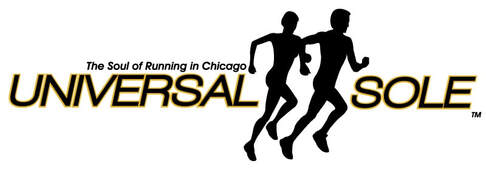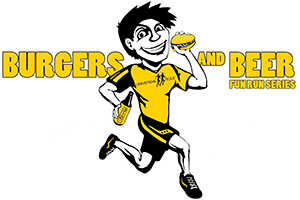|
By GRETCHEN REYNOLDS
FEBRUARY 17, 2016 Some forms of exercise may be much more effective than others at bulking up the brain, according to a remarkable new study in rats. For the first time, scientists compared head-to-head the neurological impacts of different types of exercise: running, weight training and high-intensity interval training. The surprising results suggest that going hard may not be the best option for long-term brain health. As I have often written, exercise changes the structure and function of the brain. Studies in animals and people have shown that physical activity generally increases brain volume and can reduce the number and size of age-related holes in the brain’s white and gray matter. Exercise also, and perhaps most resonantly, augments adult neurogenesis, which is the creation of new brain cells in an already mature brain. In studies with animals, exercise, in the form of running wheels or treadmills, has been found to double or even triple the number of new neurons that appear afterward in the animals’ hippocampus, a key area of the brain for learning and memory, compared to the brains of animals that remain sedentary. Scientists believe that exercise has similar impacts on the human hippocampus. These past studies of exercise and neurogenesis understandably have focused on distance running. Lab rodents know how to run. But whether other forms of exercise likewise prompt increases in neurogenesis has been unknown and is an issue of increasing interest, given the growing popularity of workouts such as weight training and high-intensity intervals. So for the new study, which was published this month in the Journal of Physiology,researchers at the University of Jyvaskyla in Finland and other institutions gathered a large group of adult male rats. The researchers injected the rats with a substance that marks new brain cells and then set groups of them to an array of different workouts, with one group remaining sedentary to serve as controls. Some of the animals were given running wheels in their cages, allowing them to run at will. Most jogged moderately every day for several miles, although individual mileage varied. Others began resistance training, which for rats involves climbing a wall with tiny weights attached to their tails. Still others took up the rodent equivalent of high-intensity interval training. For this regimen, the animals were placed on little treadmills and required to sprint at a very rapid and strenuous pace for three minutes, followed by two minutes of slow skittering, with the entire sequence repeated twice more, for a total of 15 minutes of running. These routines continued for seven weeks, after which the researchers microscopically examined brain tissue from the hippocampus of each animal. They found very different levels of neurogenesis, depending on how each animal had exercised. Those rats that had jogged on wheels showed robust levels of neurogenesis. Their hippocampal tissue teemed with new neurons, far more than in the brains of the sedentary animals. The greater the distance that a runner had covered during the experiment, the more new cells its brain now contained. There were far fewer new neurons in the brains of the animals that had completed high-intensity interval training. They showed somewhat higher amounts than in the sedentary animals but far less than in the distance runners. And the weight-training rats, although they were much stronger at the end of the experiment than they had been at the start, showed no discernible augmentation of neurogenesis. Their hippocampal tissue looked just like that of the animals that had not exercised at all. Obviously, rats are not people. But the implications of these findings are provocative. They suggest, said Miriam Nokia, a research fellow at the University of Jyvaskyla who led the study, that “sustained aerobic exercise might be most beneficial for brain health also in humans.” Just why distance running was so much more potent at promoting neurogenesis than the other workouts is not clear, although Dr. Nokia and her colleagues speculate that distance running stimulates the release of a particular substance in the brain known as brain-derived neurotrophic factor that is known to regulate neurogenesis. The more miles an animal runs, the more B.D.N.F. it produces. Weight training, on the other hand, while extremely beneficial for muscular health, has previously been shown to have little effect on the body’s levels of B.D.N.F., Dr. Nokia said, which could explain why it did not contribute to increased neurogenesis in this study. As for high-intensity interval training, its potential brain benefits may be undercut by its very intensity, Dr. Nokia said. It is, by intent, much more physiologically draining and stressful than moderate running, and “stress tends to decrease adult hippocampal neurogenesis,” she said. These results do not mean, however, that only running and similar moderate endurance workouts strengthen the brain, Dr. Nokia said. Those activities do seem to prompt the most neurogenesis in the hippocampus. But weight training and high-intensity intervals probably lead to different types of changes elsewhere in the brain. They might, for instance, encourage the creation of additional blood vessels or new connections between brain cells or between different parts of the brain. So if you currently weight train or exclusively work out with intense intervals, continue. But perhaps also thread in an occasional run or bike ride for the sake of your hippocampal health. Universal Sole and Simon Hyun Fitness would like to introduce a new video series on how to become a STRONGER runner. These videos are designed to take your running to the next level! Be on the lookout for new content each week. Let's get it started with a video on planks! PLANKS Planks are one of the best exercises that runners can perform for their core. A strong plank can strengthen the lower back, stomach, and improve posture. Strengthening these muscles can help runners stay injury free and running longer! Please watch the video as Simon Hyun from Simon Hyun Fitness shows the proper technique behind performing a plank. 1. Get to the floor! 2. Your elbows should be directly under the shoulders. Elbows should be bent 90 degrees. 3. Make sure you keep your stomach engaged. Core tight. 4. Feet should be together CHECKPOINTS 1. Legs are straight. 2. Make sure your hands are parallel to each other. 3. Fists are tight. Forearms are glued to the ground. Glutes should be squeezed together. Legs are straight. 4. Make sure your lower back and hips don't sag. Got a question about the video? Please message me at [email protected]. Happy running! Simon Hyun simonsayslift.com How do the carbohydrate supplements in the form of gels, blocks and beans differ from sports drinks?
Sports drinks hydrate and provide carbohydrate energy and electrolytes. Gels, like GU, Clif SHOT, Power Gel, Carboom, etc provide concentrated carbs and possibly some extra ingredients (amino acids, electrolytes, vitamins, caffeine). These carbohydrate supplements are convenient fuel for the longer training sessions or events (lasting more than an hour). Cliff Shot Bloks and Jelly Belly Sport Beans (Fruit Punch 24-Pack) are similar to a gel, but in a chewy, or semi-solid form. There are many flavors and nutrient combinations to choose from, but they all serve the same general purpose: they are carbohydrate supplements. On average the supplements provide 25 grams of carbohydrate per serving. Check the products for electrolytes, too, if that is a need in your sports nutrition plan. How do I decide which type of carb supplement to use? It depends on your preference and tolerance. Some athletes don't like the texture of gels, while others don't want to bother chewing a sport bean or block. Gels may be easier to carry (they fit into a key pocket), while blocks and beans are a bit more bulky. Blocks and sports beans add some variety to carb supplementing, giving you something to do as you run or bike (like treating yourself to a bean at a set distance). You can't reseal a gel once it's opened, but that's okay since the content of the gel pack (25 grams carb) is designed to be taken at once. Sports beans and blocks also can't be resealed. One bag of sports beans provides 25 grams of carb, so be sure to eat the whole bag. (They are noisy, but, hey, on a long run maybe you need a diversion). A package of Clif Shot Bloks provides 2 servings (3 pieces are 24 grams carbohydrate). As for tolerance, that is very individual. Don't be discouraged if you don't like a gel the first try. Experiment with different flavors and brands to see which one sits well in your stomach. Try the gels with or without caffeine, or other added ingredients. Alternate gels, sports beans and blocks in the really long training sessions for variety. Find out what will be offered on the race course and either train with that gel/flavor, or be sure to carry it with you to be on the safe side. All the carb supplements are sweet (that's the carbs ready to fuel your muscles), but so are sports drinks. If you tire of drinking the sports drinks, try alternating the sports drinks with the sports beans, blocks or gels that are taken with water. How much of a carbohydrate supplement do I need? The general recommendations for carbohydrate during exercise are 30-60 grams per hour. To get the upper range of carb grams you could drink about 34 ounces of a sports drink (14 carb grams per 8 ounces) per hour or one gel pack (25 carb grams) with water and 20 ounces of sports drink (35 carb grams). The amount of total fluids you need depends on your sweat rate. It is especially important to supplement with carbohydrates during training or an event if you have not eaten before you begin, if the training is going to last longer than an hour, or if you're in extreme conditions (very hot, cold or high altitude). If you choose to pack in the carbs with a gel, block, or bean, you still have to hydrate with fluid. Drink water with these concentrated carbohydrate supplements, but use sports drinks otherwise. You should plan ahead for the amount of fluid you need to stay hydrated and the amount of carbs you need to stay fueled. Do the math and make a plan! Do I have to use a carbohydrate supplement? No, but they are a convenient way to get the carbs you need. In addition, they are designed with the carbohydrate sources for the best absorption. Third, they do not include the fats and fibers that solid foods may provide. Fat and fiber sit in the stomach longer and may upset your stomach. If, however, you choose not to use carb supplements (you don't have them or you don't tolerate them), be sure to take in some type of carbohydrate. Sports drinks work. Candy, cut up granola bars, and fruit provide carbs, but it is harder to keep track of the amount of carbs you're getting, and you either have to lug them with you or plant them at various spots on your route. Bottom line? You need carbs for the long sessions. Use what works for you. Proper Hydration In The Heat!
Staying hydrated is critical to your running performance and, more importantly, for preventing heat-related illnesses. Dehydration in athletes may lead to fatigue, decreased coordination, and muscle cramping. Other heat-related illnesses, such as heat exhaustion and heatstroke, have even more serious consequences. Runners need to pay attention to what and how much they’re drinking before, during and after exercise. Pre-Run Hydration If you're doing a long run or race (more than 8 to 10 miles), it's important to make sure you're well-hydrated during the few days leading up to your long run. You know you're well-hydrated if you pass large volumes of pale urine at least six times a day. In the days leading up to your long run (or race), drink plenty of water and nonalcoholic fluids. Not only does alcohol dehydrate you, but it can also prevent you from getting a good night's sleep. It's not a good idea to run with a hangover because you'll most likely be dehydrated when you start running. An hour before you start your run, try to drink 16 to 24 ounces of water or other non-caffeinated fluid. Stop drinking at that point, so that you can void extra fluids and prevent having to stop to go to the bathroom during your run. To make sure you're hydrated before you start running, you can drink another 4 to 8 ounces right before you start. Drinking on the Run Here's a general rule of thumb for fluid consumption during your runs: You should take in 4 to 6 ounces of fluid every 20 minutes during your runs. During longer workouts (90 minutes or more), some of your fluid intake should include a sports drink (like Gatorade) to replace lost sodium and other minerals (electrolytes). If you don't have access to water on your running routes, you'll have to carry your own fluids with you such as the Nathan Hydration Belts! When running in the race, water and sports drink should be on course, but never expect it as it is best to continue to have your hydration belt with you as well and full of your favorite fluids. Post-Run Hydration Don't forget to rehydrate with water or a sports drink after your run. You should drink 20 to 24 fl oz. of water for every pound lost. If your urine is dark yellow after your run, you need to keep rehydrating. It should be a light lemonade color. 2015 Universal Sole Fun Run Series
Time: 6:30 PM (Come early to change and store your gear) Location: Universal Sole (3052 N Lincoln Ave, Chicago, IL 60657) Join Universal Sole, Goose Island and Saucony for the third year of this great USOLE monthly event! One Monday each month, we will go out for a great fun run 5k or 5 miles through the neighborhood and then come back, head over to Diag Bar & Grill for some burgers and Goose Island 312 Beer! Diag Bar & Grill will be running a burger special along with the first round of Goose Island 312 on the house! USOLE and Saucony will also be running a special, 10% off all Saucony shoes and 20% off all Saucony clothing during the Burgers & Beer evening runs! On various dates, Saucony will also have try on shoes of select models for folks to try and run with (on a first come first served basis). 2015: Jan 5, Feb 2, Mar 2, Apr 6, May 4, Jun 1, Jul 6, Aug 3, Sep 4, Oct 12, Nov 2, Dec 7 |
AuthorUNIVERSAL SOLE - a grass roots running events company (which had roots of close to 20 years as a running specialty retailer) offering information on running shoes, gear, accessories & overall fitness trends. Archives
June 2018
Categories |





 RSS Feed
RSS Feed